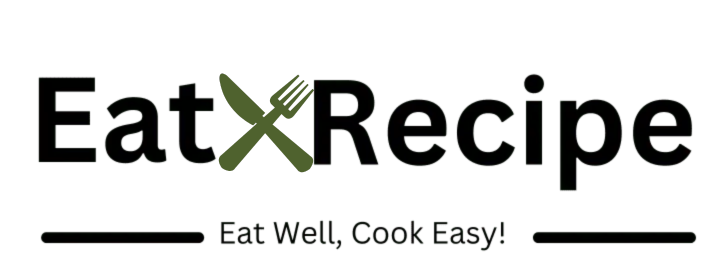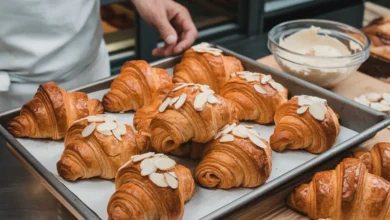Elevate Your Breakfast with Perfectly Fluffy French Toast

French toast, with its golden-brown exterior and custardy center, has been gracing breakfast tables for centuries. This beloved dish transforms simple ingredients into a morning masterpiece that’s both comforting and indulgent. Whether you’re a seasoned chef or a kitchen novice, mastering the art of French toast can elevate your breakfast game to new heights.
In this comprehensive guide, we’ll dive deep into the world of French toast. From its rich history to innovative twists on the classic recipe, we’ll explore every aspect of this breakfast favorite. Get ready to embark on a culinary journey that will transform the way you think about – and make – French toast.
The History of French Toast
Contrary to its name, French toast didn’t originate in France. In fact, versions of this dish have been enjoyed around the world for centuries. The concept of soaking bread in a mixture of milk and eggs before frying it dates back to ancient Roman times. A collection of recipes from the 4th or 5th century mentions a dish called “pan dulcis,” or sweet bread, which bears a striking resemblance to modern French toast.
In France, the dish is known as “pain perdu,” which translates to “lost bread.” This name comes from the dish’s origins as a way to use up stale bread that would otherwise be “lost” or thrown away. The French version typically uses day-old baguettes soaked in a mixture of eggs and milk, then fried and served with powdered sugar.
The term “French toast” itself is believed to have been first used in 17th century England, possibly introduced by travelers returning from France. In America, French toast became popular in the 18th century and has since become a staple of breakfast menus across the country.
The Perfect French Toast Recipe
Now that we’ve explored its history, let’s dive into creating the perfect French toast. This recipe yields 4 servings.
Ingredients:
- 8 thick slices of bread (preferably slightly stale)
- 4 large eggs
- 2/3 cup whole milk
- 1/4 cup heavy cream
- 2 tablespoons granulated sugar
- 1 teaspoon vanilla extract
- 1/4 teaspoon ground cinnamon
- 1/8 teaspoon ground nutmeg
- Pinch of salt
- 2 tablespoons unsalted butter
- 2 tablespoons vegetable oil
- Maple syrup, for serving
- Fresh berries and powdered sugar, for garnish (optional)
Instructions:
- In a large, shallow bowl, whisk together the eggs, milk, cream, sugar, vanilla extract, cinnamon, nutmeg, and salt until well combined.
- Place a large skillet or griddle over medium heat. Add 1 tablespoon each of butter and oil.
- While the pan is heating, dip a slice of bread into the egg mixture. Allow it to soak for about 20 seconds on each side, ensuring it’s well-coated but not soggy.
- Once the butter is melted and bubbling, place the soaked bread in the pan. Cook for 2-3 minutes on each side, or until golden brown and crispy.
- Repeat with the remaining slices, adding more butter and oil to the pan as needed.
- Serve immediately, topped with maple syrup, fresh berries, and a dusting of powdered sugar if desired.
The Science Behind Perfect French Toast
Understanding the science behind French toast can help you achieve the perfect texture and flavor every time. Here are some key factors to consider:
- Bread Choice: Slightly stale bread works best because it’s drier and can absorb more of the egg mixture without falling apart. The starch in stale bread has also begun to retrograde, which helps the bread hold its shape during cooking.
- Egg-to-Milk Ratio: The ideal ratio is about 1/4 cup of milk to each egg. Too much milk can make the mixture too thin, resulting in soggy toast.
- Fat Content: Using a combination of whole milk and heavy cream adds richness and helps create a crispy exterior.
- Sugar in the Mix: Adding sugar to the egg mixture not only sweetens the toast but also promotes browning through caramelization.
- Soaking Time: The bread should soak just long enough to absorb the mixture but not so long that it becomes saturated and falls apart. About 20 seconds per side is usually perfect.
- Cooking Temperature: Medium heat is ideal. It allows the outside to brown nicely while giving the custard inside time to set.
Tips for French Toast Success
- Choose the Right Bread: Thick-cut bread like brioche, challah, or French bread works best. These sturdy breads can stand up to the egg mixture without falling apart.
- Dry Out Fresh Bread: If you only have fresh bread, you can dry it out in a 275°F (135°C) oven for about 10 minutes per side before using.
- Don’t Skip the Fat: The combination of butter and oil in the pan gives the best flavor and prevents burning.
- Keep It Warm: If you’re making a large batch, keep cooked slices warm in a 200°F (95°C) oven until ready to serve.
- Experiment with Flavorings: Try adding different spices or extracts to your egg mixture. Cardamom, almond extract, or even a pinch of cayenne can add interesting dimensions to your French toast.
- Make It Ahead: You can prepare the egg mixture the night before and refrigerate it. This allows the flavors to meld and makes morning preparation quicker.
Nutritional Aspects of French Toast
While French toast is often considered an indulgence, it can be part of a balanced diet when enjoyed in moderation. Here’s a breakdown of its nutritional components:
- Protein: The eggs and milk provide a good amount of protein, which helps keep you feeling full.
- Carbohydrates: The bread provides energy-giving carbohydrates.
- Calcium: Milk and cream contribute calcium for bone health.
- Vitamins and Minerals: Eggs are rich in vitamins A, D, E, and B12, as well as minerals like selenium and zinc.
To make your French toast healthier, consider these modifications:
- Use whole grain bread for added fiber and nutrients.
- Substitute some whole eggs with egg whites to reduce cholesterol.
- Use low-fat milk instead of whole milk and cream.
- Top with fresh fruits instead of syrup for natural sweetness and added vitamins.
Variations on Classic French Toast
Once you’ve mastered the basic recipe, why not experiment with some creative variations? Here are some ideas to inspire you:
- Stuffed French Toast: Create a sandwich with two slices of bread and a filling like cream cheese and fruit, then dip and cook as usual.
- French Toast Casserole: Layer bread cubes in a baking dish, pour the egg mixture over, and bake for a hands-off version perfect for feeding a crowd.
- Savory French Toast: Omit the sugar and vanilla, and add herbs and grated cheese to the egg mixture for a savory twist.
- Vegan French Toast: Use plant-based milk and a mixture of ground flaxseed and water as an egg substitute.
- French Toast Sticks: Cut the bread into strips before dipping and frying for a fun, dippable version kids will love.
- Pumpkin Spice French Toast: Add pumpkin puree and pumpkin pie spice to your egg mixture for a fall-inspired breakfast.
Toppings and Accompaniments
While maple syrup is the classic topping for French toast, there are countless ways to dress up your creation:
- Fresh Fruit: Berries, sliced bananas, or sautéed apples add freshness and natural sweetness.
- Whipped Cream: A dollop of freshly whipped cream adds a touch of luxury.
- Nut Butters: A smear of almond or peanut butter adds protein and healthy fats.
- Compotes: Homemade fruit compotes can be a delicious alternative to syrup.
- Savory Toppings: For a savory version, try avocado, a fried egg, or crumbled bacon.
- Ice Cream: For an indulgent dessert version, top warm French toast with a scoop of vanilla ice cream.
French Toast Around the World
While we’ve focused on the American-style French toast, variations of this dish exist in cuisines around the world:
- Spain: “Torrijas” are typically enjoyed during Lent and Easter, often soaked in wine instead of milk.
- Hong Kong: “Hong Kong-style French toast” is stuffed with peanut butter or fruit preserves, deep-fried, and served with butter and syrup.
- India: “Bombay toast” often includes a sprinkle of sugar and cardamom in the egg mixture.
- Scotland: “Eggy Bread” is a savory version often served with ketchup or brown sauce.
Troubleshooting Common French Toast Problems
Even experienced cooks can run into issues when making French toast. Here are some common problems and how to solve them:
- Soggy Center: This usually happens when the bread is too fresh or the heat is too high. Use stale bread and cook on medium heat to ensure the center cooks through.
- Burnt Exterior: If your French toast is burning before the center cooks, your heat is too high. Lower the temperature and add a bit more oil to the pan.
- Eggy Taste: If your French toast tastes too eggy, you may be using too much egg in your mixture. Try reducing the number of eggs or increasing the amount of milk.
- Sticking to the Pan: Make sure your pan is hot enough before adding the bread, and don’t be shy with the butter and oil.
- Lack of Flavor: Enhance the flavor by adding more spices to your egg mixture or trying a different type of bread.
Conclusion
French toast, with its golden exterior and custardy interior, is more than just a breakfast dish – it’s a canvas for culinary creativity. From its humble origins as a way to use up stale bread to its status as a beloved breakfast classic, French toast has stood the test of time.
By understanding the science behind the perfect French toast, mastering the basic recipe, and exploring various adaptations, you can elevate this simple dish to new heights. Whether you prefer it classic and simple or loaded with creative toppings, there’s a French toast variation out there for everyone.
So the next time you’re looking for a breakfast that’s both comforting and impressive, remember this guide. With a few simple ingredients and some culinary know-how, you can transform ordinary bread into an extraordinary meal that will start your day off right. Happy cooking, and even happier eating!




